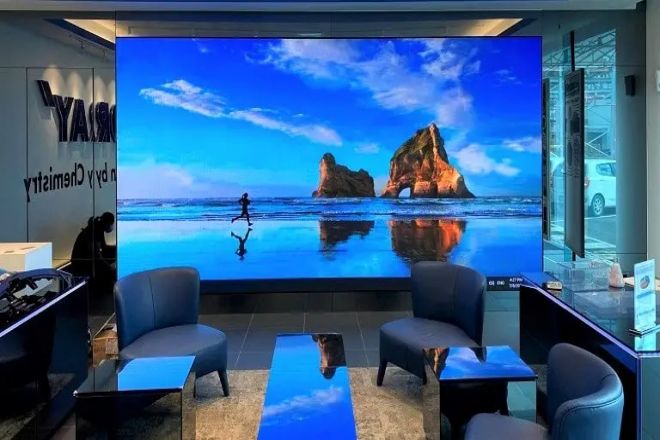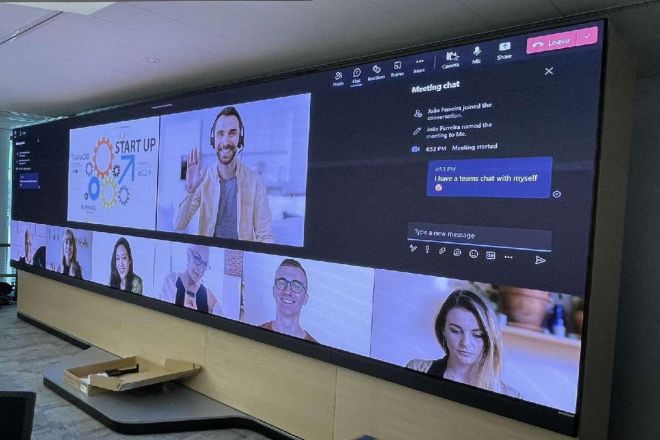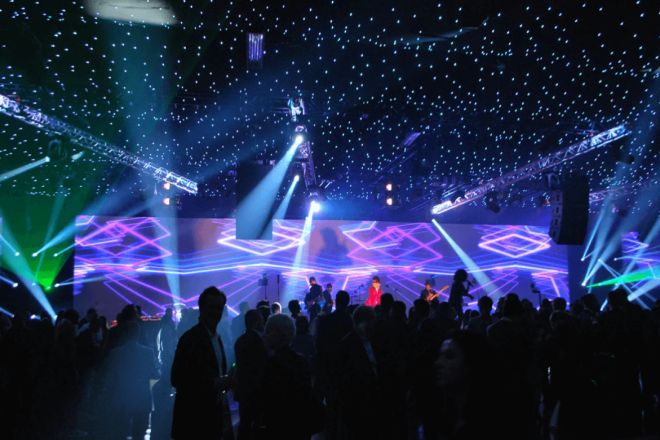Introducción

When you are ready to choose an Pantalla LED for a project or event, price is undoubtedly one of the important factors to consider. But how to ask for prices cleverly to get the most comprehensive and affordable quote? Here are some practical tips to help you communicate better with suppliers and ensure that every penny you spend is spent wisely.
1. Preliminary preparation: clarify requirements and budget

Before inquiring with LED display suppliers, sufficient preliminary preparation is crucial. This includes a clear definition of project requirements and reasonable budget planning to ensure that the inquiry process is targeted and ultimately selects high-quality products that meet both requirements and budgets.
1). Clear project requirements
First, a detailed analysis of the specific requirements of the project is required. This includes the following aspects:
- Application scenario analysis:
clarify the scenario in which the LED display will be used, whether it is an indoor or outdoor environment. Indoor environments usually require lower brightness, while outdoor environments require higher brightness to cope with sunlight.
At the same time, factors such as the viewing distance and viewing angle of the display need to be considered to determine the appropriate resolution and size.
- Determination of functional requirements:
Determine whether the LED display needs to have special functions based on project requirements. For example, if the display will be used for interactive display, then touch function may be necessary; if it is installed outdoors, waterproof performance becomes a key consideration. In addition, high-definition displays, 3D effects, curved surface designs, etc. are also possible requirements.
2). Setting a budget range
After clarifying the project requirements, the next step is to set a reasonable budget range. This includes the following steps:
- Comprehensively consider the total project budget:
When formulating the budget for the LED display, first include it in the total budget framework of the entire project. By evaluating the overall investment and expected benefits of the project, a reasonable cost space can be reserved for the LED display.
- Understand the market price range:
Understand the current price range of the LED display market through market research, online search, or consulting industry experts. This helps to have a general understanding of the market price and provides a reference for the subsequent inquiry process.
- Set an inquiry ceiling and expected price range:
After understanding the market price range, set an inquiry ceiling as the bottom line of the negotiation based on the project budget and actual needs. At the same time, you can also set an expected price range as a reference target when communicating with suppliers. This helps to maintain flexibility and initiative in the inquiry process and strive for more favorable prices and conditions.
2. Select LED screen suppliers: multi-channel screening and evaluation
In the process of LED display procurement, selecting the right supplier is a key step to ensure the success of the project. In order to find suppliers that meet project needs and have good reputations and service capabilities, we need to collect information through multiple channels and conduct preliminary screening and evaluation.
1). Collect information through multiple channels.
First, we need to broaden the source of information and use multiple channels to find potential LED display suppliers. Specific methods include:
- Use search engines:
By entering keywords such as “LED display supplier”, “HD LED display manufacturer”, etc., find relevant information in the search engine. Pay attention to the screening results and pay attention to websites or corporate pages that are ranked high and have comprehensive information.
- Participate in industry exhibitions:
Industry exhibitions are an important platform for understanding industry trends and contacting suppliers. At the exhibition, you can directly communicate with suppliers face to face, watch product displays, and obtain first-hand information.
- Browse professional forums:
Join professional forums or communities related to LED displays, exchange experiences with peers, and understand supplier reputation and market feedback.
- Refer to peer recommendations:
Consult peers or friends who have used LED displays to understand their supplier selection and usage experience and obtain reliable recommendations.
2). Preliminary screening and evaluation
After collecting a certain amount of supplier information, preliminary screening and evaluation are required. This step aims to exclude suppliers that obviously do not meet the project requirements and narrow the selection range. The specific evaluation content includes:
- Qualifications and scale:
Check the supplier’s business license, production license, and other relevant qualification certificates to understand its registered capital, production scale, and other basic information. Larger suppliers usually have stronger production capacity and a more complete service system.
- Production capacity:
Evaluate the supplier’s production process, equipment level, production capacity, etc. to ensure that it can meet the delivery time and quality requirements of the project.
- Sistema de servicio postventa:
Understand the supplier’s after-sales service policy, service network, technical support capabilities, etc., to ensure timely and effective support during the implementation of the project.
- Product catalog and technical parameters:
Check the product catalog and technical parameter table provided by the supplier, compare the performance characteristics of different products, and preliminarily determine whether they meet the project requirements.
- Customer evaluation:
Understand the supplier’s market reputation and service quality by checking customer evaluations, case presentations, etc. Focus on cases similar to project requirements and evaluate their actual effects and customer satisfaction.
3. Inquiry skills: Accurate questions and strategic responses

When inquiring with LED display suppliers, mastering certain skills can not only improve communication efficiency but also help the purchaser obtain more favorable prices and conditions. The following are some key inquiry skills and strategic responses.
1). Clearly state the requirements.
Clearly and accurately stating the project requirements is the first step to a successful inquiry. The purchaser should write a detailed inquiry letter or email clearly listing all key requirements, including but not limited to the resolution, brightness, size, color depth, refresh rate, and other core parameters of the display.
In addition, attaching auxiliary explanatory materials such as project background introduction, application scenario diagrams, and expected display effects will help suppliers better understand project requirements and provide more accurate quotations.
2). Accurate questions
During the inquiry process, the accuracy of the questions directly affects the accuracy and comparability of the quotation. The purchaser should directly ask for the quotation under a specific parameter configuration to avoid vague inquiries that lead to a wide range of quotations.
At the same time, for possible additional costs, such as installation, commissioning, training, and other service fees, it should also be clearly stated whether they are included in the quotation. This helps the purchaser to consider the total cost more comprehensively when comparing quotations from different suppliers.
3). Strategic Negotiation
After receiving quotations from multiple suppliers, the purchaser can use strategic negotiations to strive for more favorable conditions.
First, compare the quotations of different suppliers to find out the items with large price differences, and raise questions or ask for explanations accordingly. Secondly, competitive quotations should be put forward in a timely manner as bargaining chips to encourage suppliers to make concessions on prices.
In addition, asking whether there are preferential policies for bulk purchases, long-term cooperation, etc., is also an effective way to reduce procurement costs. Finally, the purchaser can also propose flexible payment methods and delivery period requirements based on the actual situation in exchange for additional discounts from suppliers on prices or services.
In the process of strategic negotiations, the purchaser should maintain a calm and rational attitude and avoid being confused by the supplier’s sweet words. At the same time, the legitimate rights and interests of suppliers should be respected to ensure that the negotiation process is fair, just, and transparent.
Through effective inquiry skills and strategic response methods, the purchaser can communicate with the LED display supplier more efficiently and strive for high-quality products that best meet the project requirements and budget.
4. In-depth communication: understanding details and customized solutions
In the process of LED display procurement, in-depth communication is the key link to ensure the smooth progress of the project and the final results meet expectations.
Through in-depth communication with technical personnel, case references, and field visits, the purchaser can fully understand the product details, explore customized solutions, and lay a solid foundation for the success of the project.
- Technical details communication
In-depth communication with technical personnel is an important way to understand the technical details and performance advantages of the product.
The purchaser should invite the supplier’s technical experts or engineers to give a detailed introduction, ask questions, and discuss key technical points such as the display effect, control method, heat dissipation design, and protection level of the display.
Through communication, the purchaser can have an in-depth understanding of the technical characteristics and advantages of the product and provide a basis for selecting the product that best suits the project’s needs.
At the same time, for special needs projects, the purchaser should discuss the possibility and cost of customized solutions with the supplier. Customized solutions can better meet the personalized needs of the project, but may also increase costs and complexity.
Therefore, during the communication process, the purchaser should clearly inform the supplier of the specific needs, budget constraints, and time requirements of the project so that the supplier can propose reasonable customized solutions and suggestions.
- Case reference and field investigation
Case references are an important way to evaluate the strength of suppliers and product quality. The purchaser can ask the supplier to provide case pictures, videos, or customer contact information of similar projects in order to more intuitively understand the actual application effect and customer feedback of the product.
By viewing the case, the purchaser can evaluate the performance of the supplier in similar projects, as well as the stability and reliability of the product.
In addition, field investigation is also an important part of in-depth communication. If conditions permit, the purchaser can arrange a field visit to the supplier’s factory or the site of the installed project.
Through the field investigation, the purchaser can see the production process, quality control process, and actual installation effect of the product with his own eyes and further verify the strength and product quality of the supplier.
At the same time, the field investigation also provides both parties with the opportunity to communicate face to face, which helps to resolve doubts and misunderstandings in communication and promotes the smooth progress of cooperation.
5. Contract signing and follow-up

At the end of the LED display procurement process, contract signing and follow-up are key steps to ensure the smooth completion of the project and long-term cooperation.
By carefully reviewing the contract content, closely following up on production progress, and strictly conducting product acceptance, the purchaser can ensure that its own rights and interests are protected while laying a good foundation for future maintenance and upgrades.
1). Detailed review of the contract
Before signing the contract, the purchaser must carefully review each clause in the contract to ensure that all details are in line with the previous negotiation results of the two parties. The key review content includes but is not limited to:
Product specifications: Confirm whether the product specifications, models, quantities, etc. listed in the contract are consistent with the inquiry.
Price and payment method: Check the total price, installment payment plan, and payment terms in the contract to ensure that they meet financial planning and budget requirements.
Delivery period: Clarify the delivery time and place of the product to ensure that it matches the project progress.
After-sales service: Understand the after-sales service content, warranty period and maintenance response time provided by the supplier to ensure that timely and effective support can be obtained during subsequent use.
Liability for breach of contract: Pay special attention to the liability clauses for breach of contract in the contract, and clarify the division of responsibilities and compensation methods of both parties in the event of breach of contract.
2). Subsequent follow-up and acceptance
After the contract is signed, the purchaser needs to communicate with the supplier on a regular basis on the production progress to ensure that the supplier can deliver on time. Before delivery, the purchaser should make preparations for receiving it, including arranging personnel, venues, and equipment.
After receiving the product, the purchaser should immediately organize the acceptance work and conduct a comprehensive inspection of the quantity, specifications, performance, and other aspects of the product to ensure that the product meets the contract requirements.
During the acceptance process, if any quality problems or non-conformities are found, the purchaser should communicate with the supplier in a timely manner and ask the supplier to make rectifications or replacements. At the same time, the purchaser should also keep the acceptance records and relevant evidence for subsequent dispute resolution.
In addition to product acceptance, the purchaser should also maintain a long-term and good communication relationship with the supplier. This not only helps to solve problems that may arise during use but also facilitates future maintenance and upgrades.
Through regular communication and sharing of usage experience and feedback, the purchaser and the supplier can jointly promote the continuous improvement and optimization of the product and achieve a win-win cooperation effect.
Conclusión
In summary, the inquiry process with the LED display supplier is a process that requires careful planning, precise execution, and flexible response.
Through sufficient preparation in the early stage, reasonable supplier selection, accurate inquiry skills, and in-depth communication, we can more efficiently find LED display products that meet project requirements and are cost-effective.
Finalmente, si quieres saber más sobre las pantallas LED, Por favor póngase en contacto con nosotros.
¿Aún no te sientes satisfecho con la lectura? Creo que los siguientes artículos también te ayudarán:
